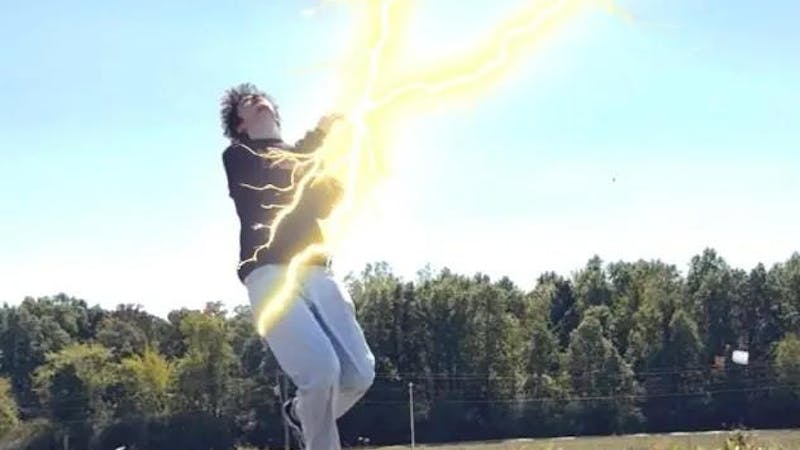The opinions and views expressed in this article are those of the author and do not reflect the opinion of Byte or Byte’s editorial board.
Reviewed on: Xbox Series S
Nobody needs reminding of Cyberpunk 2077’s disastrous launch; one where a plethora of bugs and broken promises left players feeling beyond disappointed in a game that was hyped up for years.
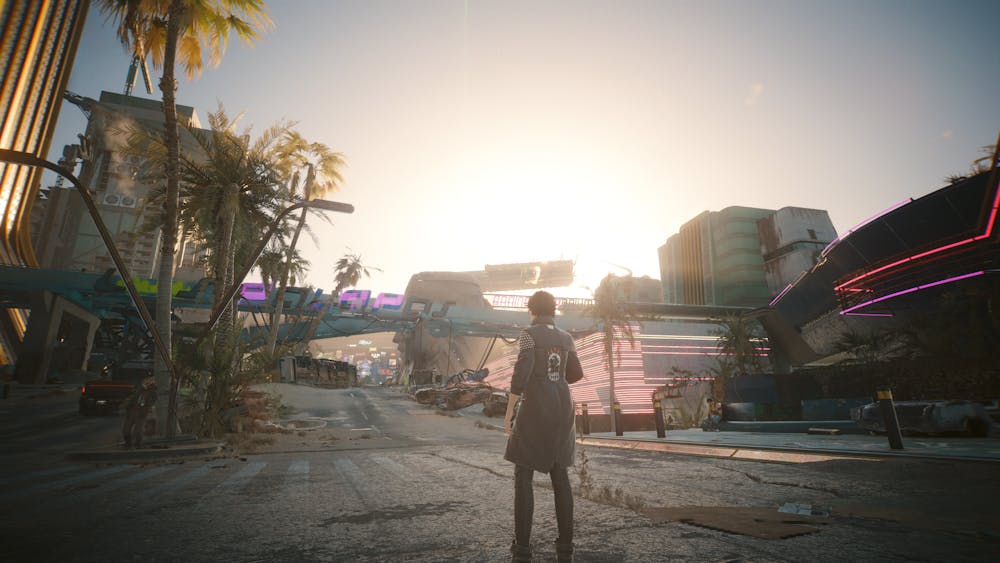
In-game screenshot taken on Xbox Series S
Since then, CD Projekt Red has made strides to fix the game and put it in a state that is acceptable for the general public. Previously, their greatest stride in this regard was a next-gen update that upgraded the game appropriately for newer consoles with better visuals, drastically reduced technical issues, and even made some gameplay tweaks. Now, Phantom Liberty enters the fray to truly make a statement with further retooled gameplay, a dense new region called Dogtown, and a thrilling cinematic espionage story.
A Top-to-Bottom Refit Down to the Wires and Chains
Along with the Phantom Liberty expansion itself, Cyberpunk 2077 has received the long awaited 2.0 update which brings sweeping changes to the way the game plays and feels. This includes a total overhaul to the game’s skill tree, a new vehicle combat system, improved enemy A.I., actual police chases, and a few other quality-of-life changes. The biggest of these changes is easily the reworked skill tree and perk system. Under the new system, skills have been tweaked and redistributed amongst the game’s core statistics to promote better build-crafting.

In-game screenshot taken on Xbox Series S
As an unfortunate result of this change, some builds may no longer be viable, such as the insta-kill-everything-stealth-hacker build I had in the past. In place of these builds, however, are some much deeper options that encourage even more player creativity. Gear and cyberware also get a much needed facelift with clothing no longer providing arbitrary armor statistics. Instead, your ability to tank damage is linked to your installed implants, which now have an installation limit based on factors such as player level. With all of these changes to build-crafting, it would certainly be worth it for returning players to start a new save just to experience the whole of the game’s new progression, as I decided to do. Going with a build almost entirely consisting of blades and pistols for my entire playthrough, I felt the new gameplay changes added a spectacular level of depth to every encounter, both new and old. The revamped police system isn’t something I felt an intense urge to interact with personally, but it’s certainly something that should have been in the game since day one, with enemies steadily increasing in difficulty and eventually resulting in Night City’s elite strike force MaxTac hunting you down. However, police aren’t the only enemies that received a difficulty tweak; many enemies are a bit harder to take down than before, and they tend to actually land their shots on you more consistently: a much welcomed challenge.
Reigning Corpo-Rats and Dogs
Phantom Liberty brings with it the region of Dogtown to serve as the stage for its spy-thriller narrative. And, by itself, Dogtown might just be the best region on the game’s densely packed map. In-game, the region of Dogtown is a part of the desolate Pacifica district that has been taken over by a rogue militant group called Berghest.
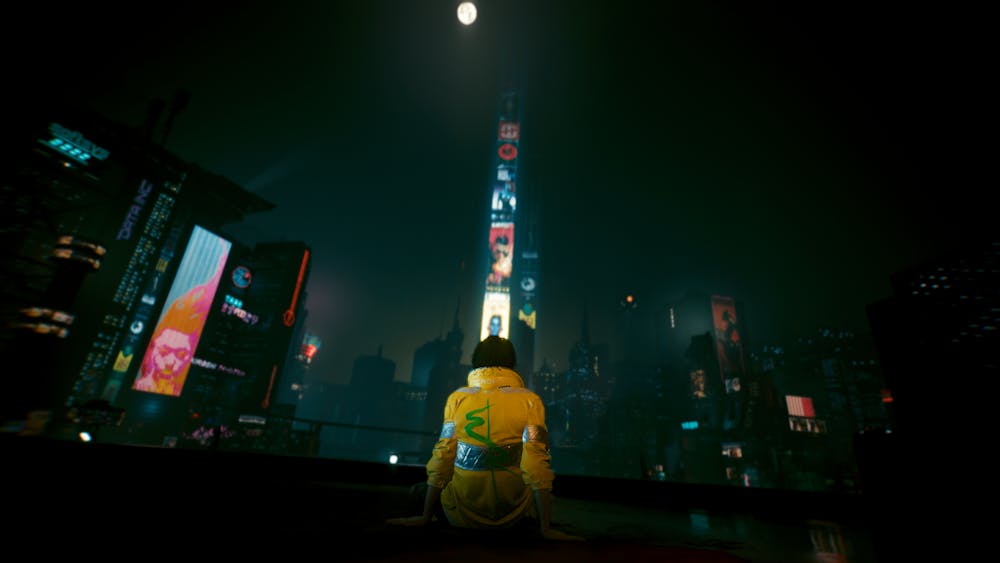
In-game screenshot taken on Xbox Series S
While roaming Dogtown, you can really feel the sense of oppression throughout the district. Soldiers stand stationed on every other street corner, patrols roam the streets, and unfortunate citizens are forced to live in squalor at the hands of an unruly regime. In service of this, Phantom Liberty’s side content does wonders to flesh out the atmosphere, providing players with spectacularly crafted side quests that seem to have taken a step up from the base game’s production quality. For example, gigs, which are typically short jobs that reward a moderate amount of gear and money in the base game, now have much more involved objectives and voice acting in Dogtown. This helps the region feel truly alive, even if it is actually only a few city blocks wide. Content is densely packed in, including side quests, gigs, vehicle collection missions, and even some collectable skill points specific to the new Relic skill tree are available for players to discover. From the pyramid-shaped dance club to the black market set up in a crumbling stadium, Dogtown is filled to the brim with things to do.
A License to Kill
Saving the best for last, Cyberpunk 2077: Phantom Liberty’s narrative is possibly the best story in the game, and one that has had me significantly more invested than some other recent games. The expansion’s quest line begins after the player finishes the story arc in Pacifica involving the Voodoo Boys. A character named Songbird (Minji Chang) will contact the player, urging them to head to Dogtown in order to save the president of the New United States. In exchange, Songbird promises V (Gavin Drea/Cherami Leigh) the cure to their neural degradation caused by the Relic bio-chip. However, this mission is only the beginning, as the player will unravel a tale of conspiracy, intrigue, and betrayal in their pursuit of Songbird’s elusive cure.
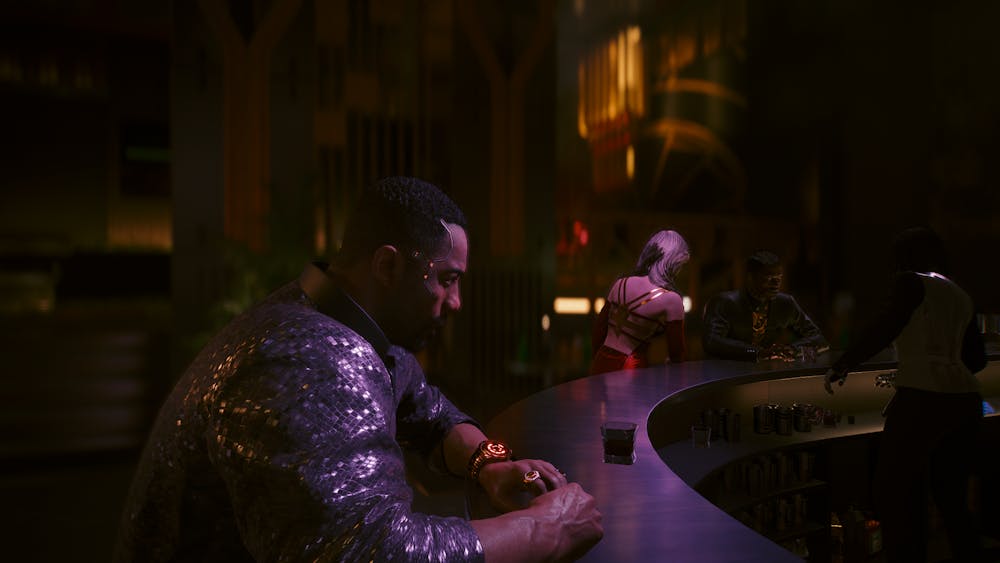
In-game screenshot taken on Xbox Series S
Once again, V and Johnny Silverhand (Keanu Reeves) continue to be spectacular characters in Phantom Liberty’s story, but the real show-stealer is, of course, Idris Elba as Solomon Reed; a NUS sleeper agent who is thrown back into the fray to assist V in their search of Songbird and, potentially, uncover a greater plot at hand. Motivated by his past trauma and determined to do what he thinks is right, Reed serves as a close confidant to V throughout the story as they delve deeper into the realm of espionage. The spy-thriller vibe CD Projekt Red was looking for is certainly present in droves throughout Phantom Liberty, from stealthy infiltration missions, undercover ops, and a mission that directly references Casino Royale, the secret agent motif is perfect groundwork for a fantastically written story about hope, grief, guilt, and despair. The conflicting viewpoints the player gets from Songbird and Reed about their connected pasts can be truly emotional at times, and I finished the expansion not fully knowing if I had made the right decisions; something that just felt so fitting for a mysterious story. The expansion even gets an animated credits sequence reminiscent of recent James Bond movies with a fantastic backing track from Dawid Podsiadło. The expansion also offers an additional ending option for the main game’s quest and it is possibly the most shocking one, leaving me with all kinds of emotions. The only major criticism I have of the expansion’s story as a whole is that the main antagonist felt poorly developed, which felt cast aside for the more interesting character conflicts towards the end, leaving some parts of the story feeling mildly anticlimactic.
When All’s Said and Done
Cyberpunk 2077: Phantom Liberty is a triumph for CD Projekt Red, and is the final piece needed for the game to truly be excellent. The 2.0 update’s numerous gameplay changes allow for the true Edgerunner fantasy by opening up new avenues for builds while also adding more depth and immersion to the streets of Night City. Dogtown is a testament to the development team’s talent for creating immersive worlds with its densely packed streets and detailed side content. The expansion’s campaign is a wonderfully crafted spy story that pulls at the heartstrings and keeps the player on their toes at all times.
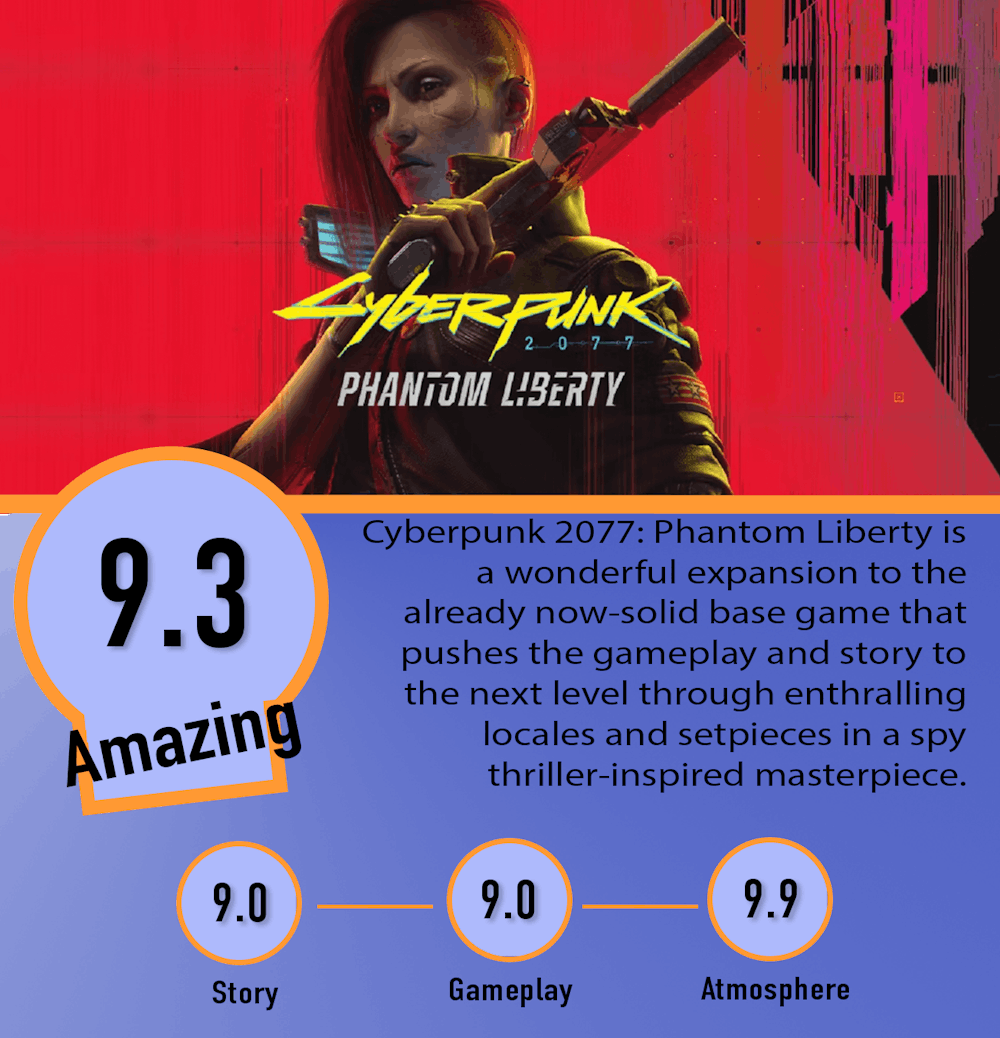
Sources:
Cyberpunk, Forbes, CDProjektRed, Cyberpunk, IMDb, IMDb, IMDb, IMDb, IMDb, IMDb, Youtube, Spotify
Photos:
Contact Ian Case with comments at ian.case@bsu.edu


















